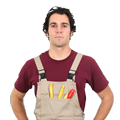What can concreting be used for around your home?
Concreting is versatile, and a quality concreter can use concrete in innovative ways to add design and structural elements to your home. Concrete also comes in a variety of textures and designs.
- Driveways: Driveways need to be both aesthetically pleasing and efficient - durable and low maintenance. Concreting your driveway is a great option, and you can choose anything from plain asphalt to stencilled, stamped and textured. Concreting can also be done in a wide range of colours to complement your home's style.
- Footpaths: Footpaths on high traffic areas (eg to the front door, washing line or BBQ area) are a good way to add character to your garden and reduce the impact of your tread on grass. Footpaths have the same options as driveways with a wed range of colours and finishes or textures.
- Foundations: Commonly, concrete is used for foundations, as it's resistant to termites and is also strong. Concrete can be used in different ways depending on the gradient of the block and the soil or drainage.
- Formwork: Concrete is poured into a mould and set in a shape (form!). Formwork enables many different concreting projects to be structurally sound and reliable.
- House Slabs: Like with concrete foundations, house slabs are common in Australia and can be used in many different terrains and house styles. Concrete can be used as a floor or be an even, solid surface to lay flooring over it like carpet, laminate or floating floor boards.
- Swimming pools: Concrete swimming pools are common, and because concrete isn't pre-made you can use concrete to make any shape of swimming pool you want, including the steps inside the pool or even seating areas or shallower areas for children.
- Retaining walls: Some gardens require retaining walls to help you turn a steep slope into a manageable garden in graded steps. Some garden don't need retaining walls but can be great deign features for raised garden beds and water features.
- Mini slabs: Concrete used as a base for a garden shed elevates the shed and provides it with a solid base. You can also use concrete as a base for a pergola.
- Foundations for post holes and brick walls: Most outdoor wooden structures like decks and fences need some kind of foundation for the post holes. Depending on the terrain, your brick wall may also need a concrete base poured.
Once concrete is laid, a concreter can grind it to make it smoother. Grinding can also be used to remove old sealants or coatings for a fresh look, and once grinding is done the concrete must be resealed because concrete is porous. This prevents water seepage and staining, and some sealing options can also reduce the slippery-ness of concrete to make concrete safer.
Types of concrete
- Exposed aggregate concrete: This kind of concrete has other materials such as pebbles or stones mixed into it which can result in a more interesting textured finish.
- Spray-on concrete: Concrete in many colours is sprayed onto features (sometimes on top of concrete) to create interesting visual impacts and designs.
- Asphalt: You'll see asphalt a lot in Australia, as it's very durable and commonly used for paths, driveways and paving.
- Coloured concrete: Concrete is like a base for a colour palate, and you can add colour to most types of concrete. You can use more than one colour to create fantastic patterns and designs.


